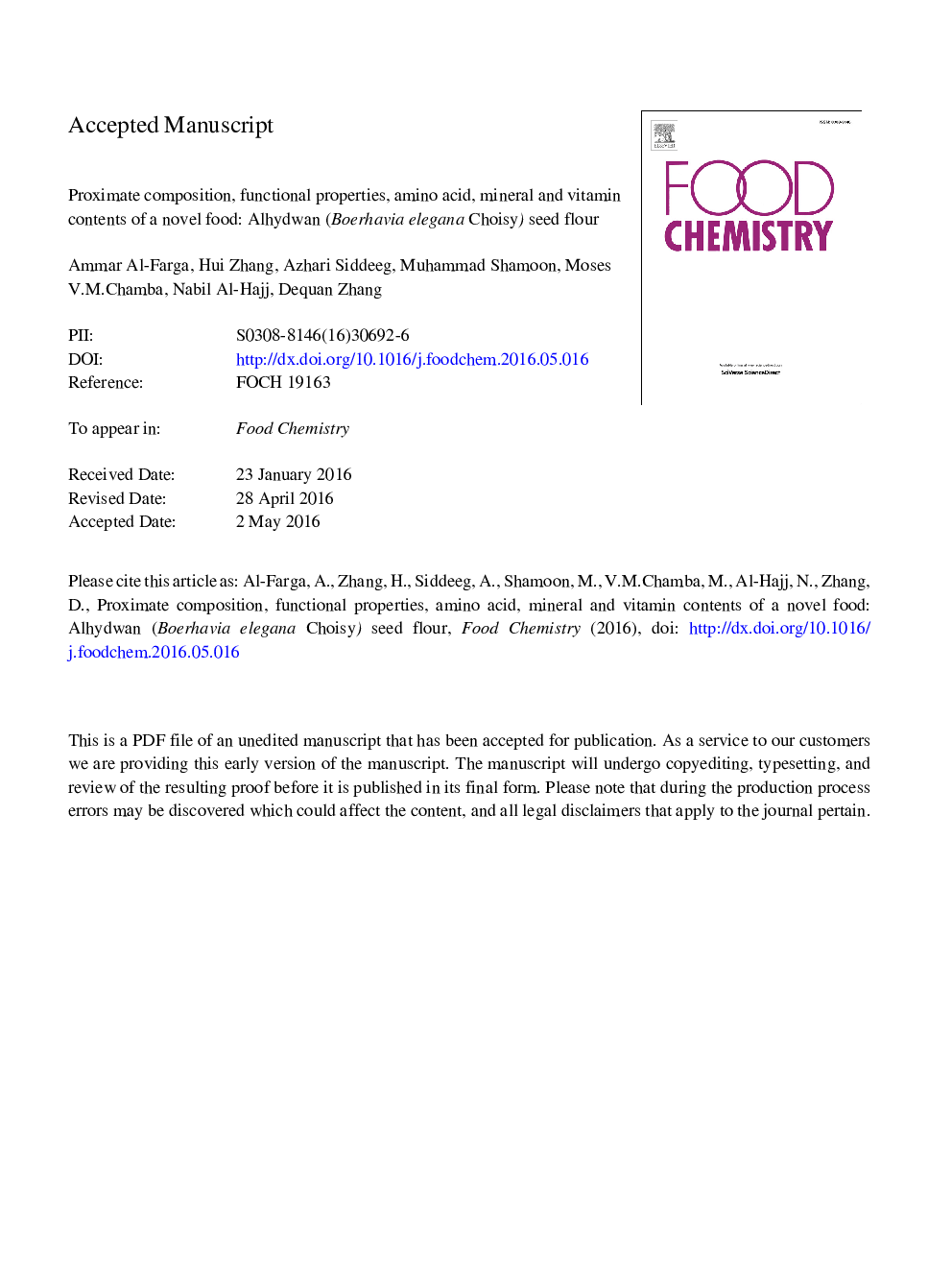| Article ID | Journal | Published Year | Pages | File Type |
|---|---|---|---|---|
| 7588523 | Food Chemistry | 2016 | 28 Pages |
Abstract
Alhydwan (Boerhavia elegana Choisy) seed flour was evaluated for chemical and nutritional composition, and functional properties in a pursuit to identify an innovative plant with high nutraceuticals value which could be exploited in other food applications. The flour was found to be rich in dietary fiber (30.13%), protein (14.60%), crude fat (11.49%), carbohydrates (30.77%), and ash (6.88%) and encompassed adequate amounts of essential amino acids and minerals, whereas, sucrose constituted 71.3% of total sugar contents. Vitamins analysis revealed that flour is rich in water-soluble vitamins such as Thiamin (B1), Riboflavin (B2) and Niacin (B3), to the amounts of 19.3, 8.2 and 2.3Â mg/100Â g, respectively. Results on functional properties demonstrated high water and oil absorption capacities of 6.31 and 2.43Â g/g, respectively. Foaming capacity, foam stability and emulsion capacity were 9.35%, 6.90%, and 29.60%, respectively. It can be concluded that alhydwan is an excellent food material with a high nutritional value.
Related Topics
Physical Sciences and Engineering
Chemistry
Analytical Chemistry
Authors
Ammar Al-Farga, Hui Zhang, Azhari Siddeeg, Muhammad Shamoon, Moses V.M. Chamba, Nabil Al-Hajj,
